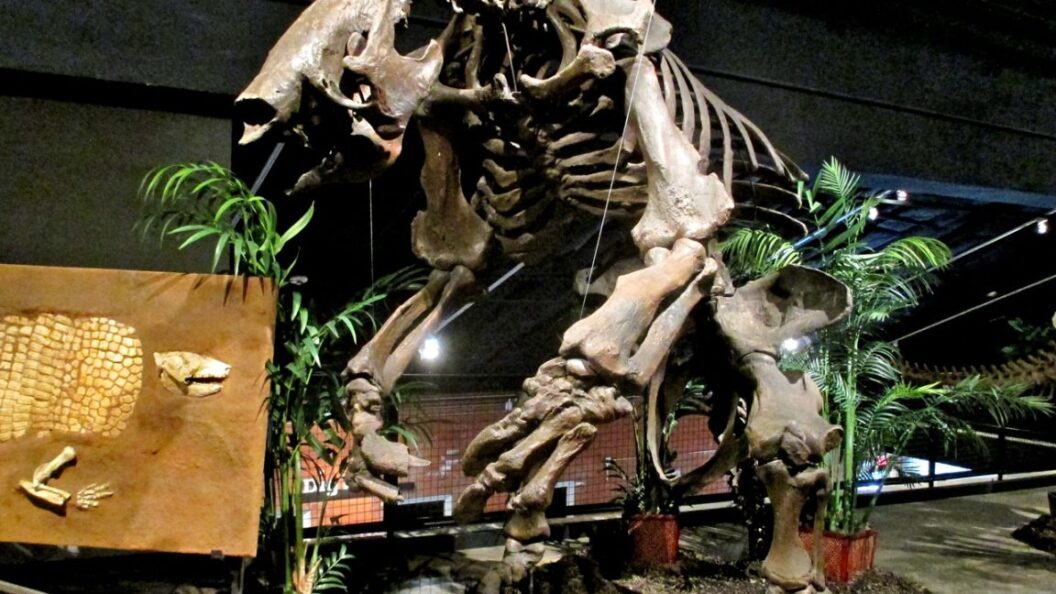The Extinction of Ice Age Megafauna: A Tale of Climate and Human Impact
As the last Ice Age concluded, a dramatic transformation swept across the planet, leading to the extinction of several iconic megafauna species, including mammoths and giant sloths. Recent research has refocused scientific attention on the factors contributing to these extinctions, particularly the role of human hunting practices contrasted against climatic shifts. This article explores the dynamics of this extinction event, providing insights into humanity’s complex relationship with nature during a critical period in historical ecology.
Humanity’s Role in Extinctions
The prevailing narrative surrounding the extinction of large Ice Age creatures often assigns significant blame to changing global climates. As warmer and wetter conditions altered habitats, many species struggled to adapt, facing severe habitat loss and competition. However, a growing body of evidence suggests that human activities amplified these natural processes.
While climate change has long been acknowledged as a prime factor, some researchers argue that early human hunters may have intensified these effects through targeted hunting strategies. The introduction of hunting tools, particularly the fishtail projectile point, coincided with the decline of megafauna in South America approximately 13,000 years ago, sparking debate among scientists about the extent of humanity’s culpability.
The Prey Choice Model
At the heart of the discussion is the prey choice model, a theoretical framework that evaluates which animals hunters might choose based on various factors, including availability and nutritional return. Giant sloths, a prime example of megafauna, may have been targeted by early humans due to their abundance and the substantial meat yield they offered. This model suggests that human hunters, while perhaps not the sole cause of extinction, played a pivotal role in the decline of these species by favoring the most lucrative prey.
Evidence and Counterarguments
Fossil evidence indicates that large game animals began disappearing in South America long after the initial arrival of humans, leading some researchers to believe that the connection may not be straightforward. Archaeological findings reveal few sites where human remains and extinct species bones coexist, complicating claims of direct hunting impact. Moreover, studies show that megafauna remains constituted a minor component of ancient refuse piles, suggesting that humans may not have significantly contributed to their decline.
Nonetheless, the concurrent emergence of advanced hunting tools alongside megafauna extinction timelines raises critical questions. Another layer of complexity is introduced when considering the behaviors and diets of contemporary human societies, such as the Clovis people in North America, who are known to have consumed massive quantities of mammoth meat, potentially exhibiting predatory patterns similar to those observed in later hunter-gatherer cultures.
Controversies and Scholarly Debate
The debate surrounding the extinction of megafauna remains contentious among scientists. While climate change offers a compelling backdrop, the question of human influence keeps surfacing as more archaeological evidence comes to light. Some argue that as humans spread across the globe, their hunting practices varied widely, leading to differing outcomes for local ecosystems.
The complexity of these interactions means that, even in cases where evidence of hunting is scarce, the impact of human behavior cannot be entirely dismissed. Thus, while definitive conclusions are yet to be established, it is clear that the interplay between humans and megafauna was intricate and nuanced.
Significance and Future Research
Understanding the factors that led to the extinction of Ice Age megafauna is crucial not only for appreciating the role of early humans in shaping ecosystems but also for addressing contemporary concerns regarding biodiversity loss. The lessons drawn from these historical events can inform current conservation strategies as humans navigate their relationship with nature in an era of profound environmental change.
In summary, while significant evidence points towards climate change as a leading factor in the extinction of megafauna, the potential role of human hunting is becoming increasingly recognized. Continued research will be vital in unraveling this complex historical narrative, with implications that reach far beyond the last Ice Age, highlighting the enduring impact of human actions on the environment.









